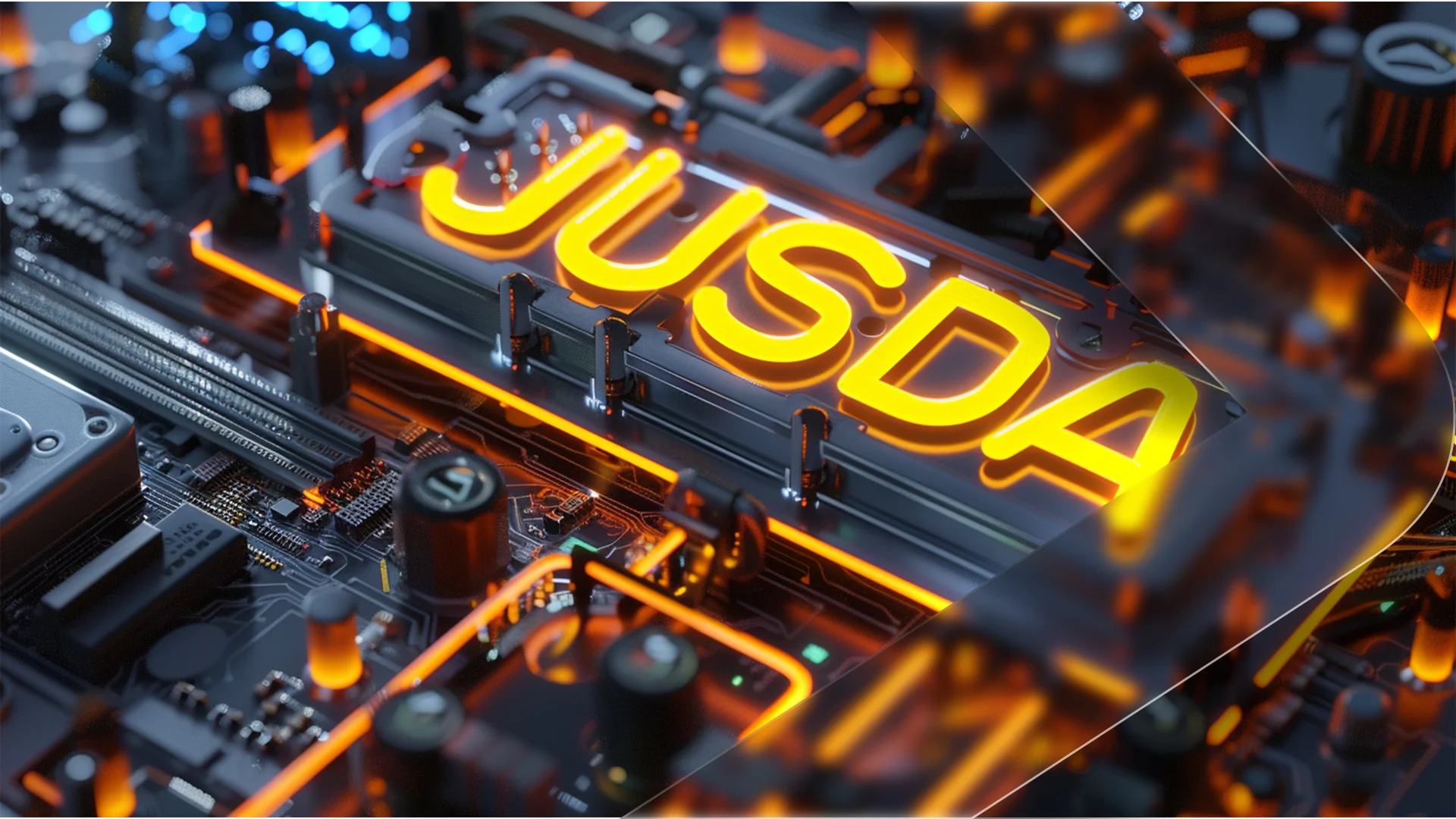How Digital Twins and AI are Transforming Predictive Supply Chain Ecosystems

Digital Twins and AI now drive a new era in predictive supply chain management. Companies gain real-time visibility and accurate forecasting, which leads to faster, smarter decisions. The numbers speak for themselves: demand forecasting accuracy improves by 35%, while stockouts drop by 28%.
Innovative brands like JUSDA lead this transformation, using advanced technology to build resilient, efficient networks that keep pace with global change.
Key Takeaways
Digital Twins and AI give companies real-time visibility and accurate forecasts, helping them make faster, smarter supply chain decisions.
These technologies work together to predict risks and simulate scenarios, allowing businesses to prepare and respond before problems happen.
JUSDA’s JusLink platform uses AI and Digital Twins to provide full supply chain control, improving inventory tracking, forecasting, and risk management.
Using Digital Twins and AI leads to big efficiency gains, such as higher production output, lower costs, and reduced waste across industries.
Successful adoption requires strong data integration, investment in technology and training, and careful change management to unlock full benefits.
Predictive Supply Chain Transformation
Digital Twins and AI now shape the future of supply chain management. These technologies work together to create a digital mirror of physical operations. Companies use this mirror to collect real-time data, simulate scenarios, and improve forecasting. The result is a Predictive Supply Chain that adapts quickly to changes and reduces risks.
Enhanced Visibility
Digital Twins connect physical assets with digital models. Sensors, IoT devices, and cloud platforms feed live data into these models. This process gives supply chain managers a clear, up-to-date view of every step in the network. They can track shipments, monitor inventory, and spot bottlenecks before they cause problems.
Companies that use Digital Twins and AI see measurable gains in visibility and efficiency. For example, McKinsey reports a 15-20% increase in production output and a 20-35% faster time-to-market. Tesla uses virtual prototyping to run millions of crash tests, cutting development time by 40%. These improvements come from better real-time data utilization and scenario simulation.
Aspect | Improvement / Impact | Example / Source |
|---|---|---|
Real-time Data Utilization | Continuous updates and feedback loops | McKinsey: 15-20% production output increase; 20-35% faster time-to-market |
Scenario Simulation | Virtual prototyping and 'what-if' scenario planning | Tesla: 2 million virtual crash tests; 40% reduced development time |
Forecasting Accuracy | Improved predictive maintenance and sales forecasting | PwC: 30% maintenance cost reduction; Unit8: forecasting platform outperforms existing solutions |
Production Efficiency | 30% average improvement in OEE | GE Aviation: 10% production efficiency increase; $64M annual savings |
Predictive Maintenance | Downtime reduced by up to 45% | PwC analysis; Merck: zero quality recalls over 3 years |
Cost Reduction | 18-25% product development cost reduction; 14-23% operating cost reduction | Siemens: €500M savings over 3 years; Unilever: $52M annual operational savings |
Business Impact (Case Studies) | BMW: 24% reduction in planning time; 18% OEE improvement; €80M savings | Unilever: 65% downtime reduction; 20% energy reduction |
JUSDA’s approach to digital transformation uses these same principles. The JusLink platform integrates IoT, cloud computing, and big data to provide real-time collaboration and information sharing. This system gives clients full visibility into their supply chain, from raw materials to finished goods. JUSDA’s warehouse solutions also use advanced management systems for real-time inventory tracking, ensuring transparency and control.
Proactive Decisions
AI and Digital Twins do more than show what is happening now. They help managers predict what will happen next. By running simulations and analyzing data, these tools support scenario planning and risk management. Managers can test “what-if” situations, such as demand spikes or supply disruptions, and prepare responses before issues arise.
JUSDA’s methodology stands out in this area. The company combines real-time data from sources like GIS, remote sensing, GPS, and IoT to build detailed virtual models. These models allow scenario analysis and resource optimization. For example, in agriculture, this approach led to better crop yields through smarter resource use. In manufacturing, AI and machine learning analyze data streams to spot patterns and predict disruptions. This helps JUSDA’s clients optimize inventory, improve sourcing, and manage risks before they become costly problems.
JUSDA’s JusLink platform uses AI-driven forecasting and risk management to support proactive decisions. The system benchmarks and tunes models for accurate sales forecasting, even for millions of products. In one case, a global retail manufacturer improved forecasting accuracy and enabled new use cases by adopting this approach.
Use Case | Challenge / Goal | Solution / Approach | Business Impact / Results |
|---|---|---|---|
Glass Bottle Manufacturer | Improve yield from 86% to 90%; prioritize sensor data | Developed causal models and ML on Foundry platform | Highlighted data quality issues; trained stakeholders |
Global Retail Manufacturer | Accurate sales forecasting for 10+ million products | Forecasting platform with model benchmarking and tuning | Outperformed existing forecasting accuracy and efficiency; enabled new forecasting use cases |
JUSDA’s Predictive Supply Chain solutions empower businesses to act, not just react. With advanced analytics and digital modeling, companies can make smarter, faster decisions that drive efficiency and resilience.

JUSDA Solutions
To provide you with professional solutions and quotations.
Digital Twins and AI Explained

Digital Twins
Digital Twins create virtual copies of real-world supply chain systems. These digital models use data from sensors and machines to mirror physical operations. Companies use Digital Twins to simulate, test, and improve their processes without stopping actual production. They help managers see what is happening in real time and try out different solutions before making changes.
Digital Twins measure success with key performance indicators like Overall Equipment Effectiveness (OEE), On-Time In-Full (OTIF), and capacity utilization. For example, companies have seen production costs drop by up to 25% and lead times shrink by as much as 72% after using Digital Twins. Studies show that Digital Twins make supply chains more sustainable and resilient. They help teams spot bottlenecks, track inventory, and manage risks better. In one case, a digital twin platform in the oil and gas sector reduced late orders and improved decision-making by using predictive analytics.
Digital Twins optimize scheduling by simulating equipment performance and workload.
They support just-in-time production and help minimize costs.
Real-time data collection is key for effective digital twin use.
AI in Supply Chains
Artificial Intelligence (AI) brings smart decision-making to supply chains. AI uses machine learning and data analysis to predict demand, manage inventory, and spot risks. Companies use AI to improve forecasting accuracy, reduce waste, and make faster decisions.
Impact Area | Improvement/Reduction |
|---|---|
Up to 30% improvement | |
Stockouts and overstock | Significant reduction |
Inventory waste (expired products) | 20% reduction |
Delivery efficiency | 25% improvement |
Logistics costs | 15% reduction |
Supply chain disruptions | 40% reduction due to early risk identification |
AI systems, like those at Amazon and Coca-Cola, analyze huge amounts of data to manage inventory and forecast demand. These systems help companies respond quickly to market changes and avoid running out of stock.
Synergy of Technologies
Digital Twins and AI work best when used together. This combination allows companies to simulate real-world scenarios and make smart choices based on data. For example:
AI-powered Digital Twins predict when machines need maintenance, reducing downtime.
They analyze demand patterns to improve inventory management.
Digital Twins simulate disruptions, while AI models help plan for events like supplier delays.
Real-time insights let managers adjust production and delivery routes quickly.
Together, they help companies use resources wisely and lower their environmental impact.
Automotive, retail, and pharmaceutical companies use this synergy to monitor production, forecast shortages, and ensure product safety. By combining Digital Twins and AI, businesses gain a powerful tool for building smarter, more resilient supply chains.
Integration in JUSDA Solutions
JusLink Platform
JUSDA’s JusLink platform stands at the center of its digital transformation strategy. The platform uses Digital Twins and AI to create a virtual model of the entire supply chain. This model mirrors real-world operations and provides a foundation for predictive supply chain management. JusLink collects data from IoT devices, cloud systems, and external sources. The platform then uses AI to analyze this data and generate accurate forecasts.
JusLink offers several advanced features:
AI-driven sales forecasting predicts demand trends and helps companies plan production.
Intelligent replenishment management ensures inventory levels stay optimal.
The Control Tower monitors risks in real time and sends alerts for potential disruptions.
Automated application management tracks shipments and detects anomalies.
JusLink’s AI agents support users in six key areas, including material preparation, delivery stocking, logistics management, and risk assessment. These agents use natural language processing, making it easy for users to interact with the system and get answers quickly. JusLink’s integration of DeepSeek’s large language model further enhances its ability to process complex data and provide actionable insights.
Warehouse Management
JUSDA’s warehouse management solutions use Digital Twins and AI to optimize every aspect of warehouse operations. The company operates a global network of warehouses equipped with advanced management systems like eVMI and JusLink. These systems provide real-time inventory tracking and control, which is essential for a predictive supply chain.
Key improvements from Digital Twins and AI in warehouse management include:
Increased picks per hour by 30%, as seen in smart inventory systems.
Reduced travel distance within warehouses by 39% through simulation and route optimization.
Shortened onboarding time for new employees from months to about two weeks.
Enhanced workforce efficiency by fostering collaboration between humans and robots.
Higher employee engagement, with 84% reporting greater job satisfaction due to AI-powered gamification.
Description / Improvement Due to Digital Twins and AI Deployment | |
|---|---|
Inventory Accuracy | Stock levels match recorded data, improved by AI-driven analytics. |
Order Picking Accuracy | Correctness of picked items, enhanced by optimized pick paths via Digital Twins. |
Order Cycle Time | Time from order placement to fulfillment, reduced through AI and simulation optimizations. |
Energy Consumption per Order | Tracks carbon footprint per shipment, enabling sustainability improvements. |
Automation Utilization Rate | Effective use of AMRs, robotic sortation, and AI-powered WMS tools. |
Predictive Maintenance Compliance | AI-driven schedules reduce equipment failures and downtime by up to 50%. |
Employee Engagement Index | Workforce satisfaction, improved by AI-enhanced collaboration and gamification. |
Overall Equipment Effectiveness (OEE) | Real-time tracking improves machine availability, performance, and quality. |
Machine Uptime | Increased through predictive maintenance forecasting mechanical wear before failure. |
Throughput | Rate of processing items improved by automation and AI-driven resource allocation. |
Travel Distance Reduction | Digital Twins simulations reduce travel distance in warehouses by 39%. |
Picks per Hour | 30% increase in picks per hour due to AI and Digital Twins. |
Onboarding Time | Reduced from months to as little as two weeks by AI-optimized training and workflows. |
JUSDA’s warehouse solutions also support value-added services such as picking, packing, labeling, and kitting. The company’s clean room facilities meet strict environmental standards, making them suitable for industries like electronics and healthcare.
Real-Time Data Use
Real-time data use forms the backbone of JUSDA’s predictive supply chain approach. The company integrates data from sensors, GPS, and external platforms into its digital twin models. This integration allows managers to monitor inventory, shipments, and equipment status at every moment.
JusLink’s real-time dashboards display key metrics, such as inventory levels and order status. AI algorithms analyze this data to identify trends, predict disruptions, and recommend actions. For example, the system can alert managers to potential delays or suggest alternative routes for shipments. Predictive maintenance schedules reduce equipment downtime and keep operations running smoothly.
JUSDA’s real-time data capabilities help companies respond quickly to changes in demand or supply. This agility supports cost savings, reduces waste, and improves customer satisfaction.
JUSDA’s integration of Digital Twins and AI across its JusLink platform and warehouse management delivers a robust predictive supply chain ecosystem. Companies gain full visibility, accurate forecasting, and proactive risk management, setting a new standard for global supply chain excellence.
Benefits and Applications

Forecasting Accuracy
Digital Twins and AI have transformed how companies predict demand and manage inventory. Many industry leaders now rely on these technologies to improve forecasting accuracy.
About 70% of key stakeholders in the oil and gas sector consider digital twins essential, with over 43% already using them for predictive analysis.
Ikea reduced HVAC energy use by 30% across 42 million square feet in East Asia, saving millions each year.
Smart city projects, like in Chattanooga, Tennessee, improved traffic flow by 30% using digital twins, which also enhanced energy efficiency.
Nanyang Technological University in Singapore achieved 31% energy savings and cut carbon emissions by 9.6 kilotons.
JUSDA’s Predictive Supply Chain solutions help businesses achieve similar results. Clients gain more accurate sales forecasts, which leads to better production planning and fewer stockouts.
Risk Mitigation
AI-driven tools help companies spot risks early and respond quickly.
AI enables early identification of supply chain disruptions and predicts logistical risks, such as weather delays.
Supplier risk assessments use AI to monitor financial stability and geopolitical risks.
Automated compliance monitoring and fraud detection tools prevent financial losses.
Predictive analytics detect equipment failures, reducing downtime and supporting contingency planning.
JUSDA’s JusLink platform uses AI to scan billions of data points, giving companies early warnings about supplier or logistics risks. Automotive brands like Audi and Volkswagen use similar AI models to monitor global news and identify ESG risks.
Efficiency Gains
Companies using Digital Twins and AI see major improvements in cost and speed. TE Connectivity, for example, used AI to cut raw material costs by 15% and improve cost transparency.
The table below shows how leading companies benefit:
Company | Efficiency Gains | Sustainability Gains |
|---|---|---|
LG Electronics | Productivity +17%, Product Quality +70% | Energy Consumption -30% |
Procter & Gamble | On-time deliveries 99.9%, Inventory -30% | Logistics Cost -15% |
Western Digital | - | Energy Consumption -41% |
Schneider Electric | - | Energy Management -25%, Material Waste -17%, CO2 Emissions -25% |
JUSDA’s warehouse solutions deliver similar efficiency, with real-time inventory tracking and optimized workflows.
Sustainability
Digital Twins and AI support sustainability by reducing waste and energy use. Companies like Ikea and Schneider Electric have cut energy consumption and carbon emissions. JUSDA’s clean room warehouses and optimized logistics help clients meet strict environmental standards.
Industry Examples
JUSDA’s customer stories show real-world impact. Chinese manufacturers expanded globally with JUSDA’s Predictive Supply Chain platform, overcoming complex procurement and customs challenges. The platform improved transparency, reduced manual work, and enabled cost-effective global growth.
Companies using JUSDA’s solutions report faster expansion, lower costs, and greater supply chain resilience.
Future of Predictive Supply Chain
Emerging Trends
The supply chain industry continues to evolve with new technologies and business models. Companies now use digital twins and AI to create more flexible and responsive networks. Many organizations move from simple automation to systems that learn and adapt. These systems can predict demand, optimize routes, and reduce waste.
A phased approach often works best. Businesses start with digital transformation, then add AI for adaptability and autonomy. Leaders invest in talent development, building skills in AI and data analytics. Responsible AI practices become a priority, ensuring transparency and compliance with regulations.
Companies recognize that AI-driven supply chains support both sustainability and economic resilience.
Human-Machine Collaboration
Human-machine collaboration shapes the next generation of supply chains. People and AI-powered tools work together to solve problems and make decisions. AI handles large data sets and finds patterns, while humans provide judgment and creativity.
This teamwork leads to better results. For example, digital twins help workers visualize supply chain operations in real time. AI agents suggest actions, but people make the final choices. Companies also use gamification and smart interfaces to keep employees engaged and productive.
Cross-functional teams, including technology providers and industry experts, drive innovation. They break down silos and extend collaboration to suppliers and customers.
Strategic Adoption
Strategic adoption of digital twins and AI requires careful planning. Organizations follow several key steps:
Develop a unified data strategy that connects procurement, logistics, vendor portals, and IoT data.
Build strong business cases with clear cost and value metrics.
Create proofs of concept to test AI applications and gain stakeholder support.
Deploy AI solutions in stages, focusing on scalability and adaptability.
Implement change management and measure value continuously.
Aspect | Example from Industry Leaders |
|---|---|
Leadership Commitment | Executive teams position digital twins as strategic platforms. |
Strategic Pivoting | Digital twins support both short-term and long-term business goals. |
Capital Allocation | Improved investment decisions and capital efficiency, such as a 25% reduction in capital expenditure. |
Organizational Readiness | Focus on data quality, connectivity, and a data-driven culture. |
Cross-functional Collaboration | Collaboration extends beyond company boundaries to suppliers and customers. |
Quantitative Outcomes | 60% reduction in supply disruptions, 23% lower inventory working capital, and 30-40% lower carbon footprint. |
Companies that adopt these strategies see faster innovation, improved efficiency, and stronger supply chain ecosystems. The Predictive Supply Chain of the future will rely on both advanced technology and skilled people working together.
Digital Twins and AI reshape the Predictive Supply Chain by making operations smarter and more resilient. JUSDA leads this change with innovative digital solutions and global expertise. Companies that adopt these technologies gain better visibility and faster decision-making. To stay competitive, organizations should start with pilot projects, invest in training, and build a strong data foundation. Embracing digital transformation ensures long-term growth and stability.
FAQ
What makes JUSDA’s JusLink platform unique?
JusLink combines Digital Twins, AI, and real-time data. It offers full supply chain visibility, smart forecasting, and risk alerts. Users interact with AI agents for quick answers.
Can Digital Twins and AI help reduce supply chain risks?
Yes. These tools spot problems early. They predict disruptions and suggest solutions. Companies respond faster and avoid costly delays.
Is it hard to start using Digital Twins and AI?
Starting can be simple. Many companies begin with small projects. They use existing data and scale up as they see results.
See Also
How Digital Twins Are Transforming Supply Chain Systems
Will Digital Twins Revolutionize Supply Chain Efficiency Soon?
Exploring AI's Role In Shaping Tomorrow's Supply Chains
Driving Supply Chain Success Through AI-Powered Innovations
Machine Learning And Big Data Transforming Supply Chain Strategies
